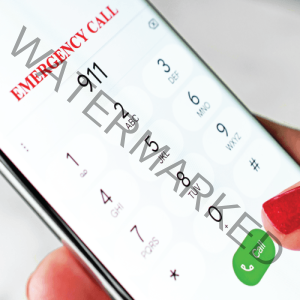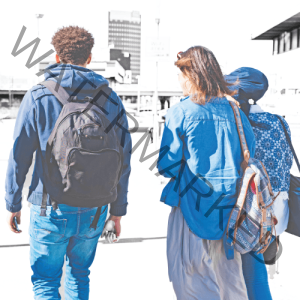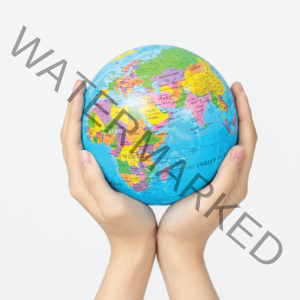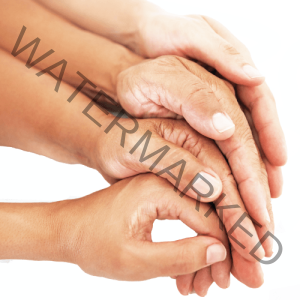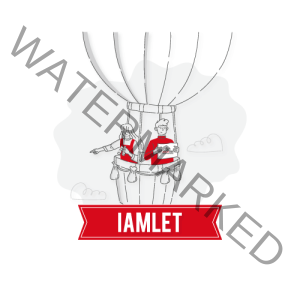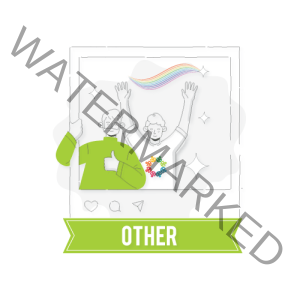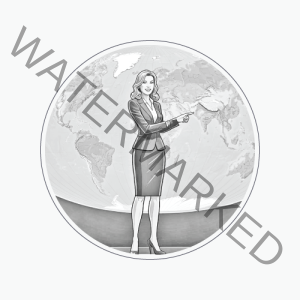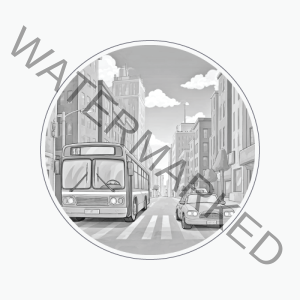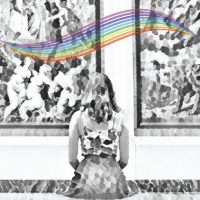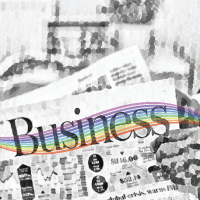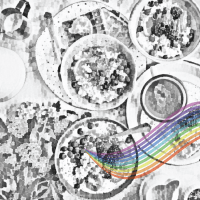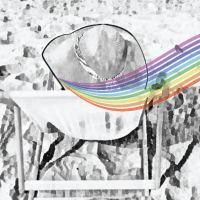
LGBTQIA+ Travel Guides:
Destination Sydney
- Atilla Tiriyaki
- Average Reading Time: 18 minutes
- Travel
- articles, atillat, guides
Located in Australasia within Oceania, Sydney, also referred to as the city, is the capital of the state of New South Wales in Australia. Sydney is situated on the eastern side of the island and has a population of 5.4 million inhabitants, with over 60% of the state’s residents living within the city. Sydney is largely made up of open spaces, full of natural beauty, has the largest population of any city in Australia, and is the second-largest by land size. Sydney is diverse, with the largest immigrant groups emigrating from China, England followed by India.
The city is 1,687 square kilometres or 1,048 square miles and is bigger than other major cities such as New York and London. Sydney is within the southern hemisphere and has a sub-tropical climate. The warmer months are during December, January, and February. Sydney is known for its luxury, impressive high-rise and colonial buildings, iconic landmarks and open spaces. Sydney is a top destination with a lot to offer visitors to the city.
Some interesting facts you might not know:- Sydney was named after Lord Sydney, the British Home Secretary at the time when the fleet first arrived at the city in 1788 and is the site of the first European colony
- It is estimated that there are over 250 different languages spoken throughout the city
- It was in 1842 that Sydney officially became a city
- Sydney successfully hosted the Olympics in 2000; coincidentally, it is also Sydney’s postal code
- At the Sydney Olympics in 2000, phased out 1 and 2 cent coins were used to produce the bronze medals
- Sydney has the world’s deepest harbour, which contains over 504 thousand megalitres of water
- Sydney has over 100 beaches, many of which are sandy, where residents and visitors enjoy the sun and surf
- Researchers found evidence that aboriginal people have been living within the Sydney area for over 30 thousand years
- Sydney is made up of 15 regions, 658 suburbs, with 33 forming the inner-city section
- People from Sydney are known as Sydneysiders
- The iconic Sydney Opera house became a world heritage site in 2007. The opera house is set in an area covering 5.8 hectares and has over fifteen thousand light bulbs
- Dr Mark Lidwill invented the lifesaving pacemaker in Crown Street Women’s Hospital in 1926
- The iconic Sydney Harbour Bridge, nicknamed the coat hanger, is the widest long-span bridge and tallest steel arch bridge in the world
- Sydney is home to the largest pride parade in Oceania, with the first event taking place in 1978

Sydney is located in Australia within the eastern part of the island. Many flights from Europe will usually take over 20 hours and require a stop in Dubai or Singapore. Direct flights are available from many destinations within Asia and to the west coast of the USA. For example, the average flight time between Sydney and Los Angeles takes over 15 hours. Flying domestically to other cities in Australia can take anything from one to five hours. For example, Sydney to Hobart takes two hours, Sydney to Alice Springs takes three hours, and Sydney to Perth takes an average of five hours.
BY AIR- Sydney Kingsford Smith Airport (///sunset.senses.water – SYD (IATA) | YSSY (ICAO)) is an international airport, the busiest in Australia, handling over 40 million passengers each year. The airport is located in the south-western part of the city and is 8 kilometres or 5 miles from the inner-city area. The airport is the main international hub for Qantas and acts as a secondary hub for Virgin Australia and Jetstar. The busiest routes to and from Sydney are from Auckland in New Zealand, followed by Singapore, Hong Kong and Los Angeles. Many travel options are available getting to and from the airport. The most popular method is via train using the Airport Link. The train takes approximately 13 minutes from the centre of the city and trains run every ten minutes. A number of bus routes are available (routes 400 and 420), connecting the airport to the Bondi junction for onward connections. Metered and private hire vehicles are available within the arrivals terminal. Journeys to the inner-city from the airport typically take approximately 20 minutes and cost anything from 45 to 55 Australian dollars (AUD)
BY SEA
- Sydney has six major ports, with only two acting as passenger/tourist terminals. Located at Wharf number 4 is a ferry terminal that operates several routes around the city
- Sydney Harbour (///seats.useful.turkey) is the leading cruise port in Sydney and is located in the city centre. The port operates many ferry routes and cruise terminals. The main cruise terminal is known as White Bay Cruise Terminal (///seats.useful.turkey), which is located in Balmain East suburb of Sydney. You can get to the terminal via taxi or by ferry. Several ferry services run from Circular Quay to Balmain East, where there is a short transfer to the cruise terminal
- Circular Quay (///almost.tiger.voices) located in the Rocks area in the city centre is the ferry terminal of Circular Quay at Wharf number 4. The ferry network comprises nine routes, taking passengers to popular destinations such as Manly, Taronga Zoo and Parramatta. The cost for the ferry will depend on the time of the day and the distance travel. The price for an adult for a single journey will range from 3 to 10 Australian dollars. The Transport NSW website (https://transportnsw.info/travel-info/ways-to-get-around/ferry/) provides details on the various routes and fare types available
BY TRAIN
- There are many train stations throughout the city, connecting the Sydney Metro, Light Rail, Sydney Trains and NSW TrainLink. Sydney has eight lines, 170 stations, and 813 kilometres or 505 miles of track
- Central Station (///noises.shuts.start) is a heritage-listed station in the centre of the city. The station is the largest and busiest in Australia and handles over 80 million passengers each year. The station connects to the majority of the stations found across the city as well as intercity. Connecting Sydney to the other cities within the state of North-South Wales
Interactive Airport Terminal Maps

- The Sydney light rail network consists of three lines and connects 42 stations from the eastern and western suburbs of the city centre. The light rail network is 24.7 kilometres or 15 miles long and runs seven days a week. The rail service typically starts from 5 am until 1 am the following day. Trains are pretty frequent, with trains arriving and departing on average between every 5-10 minutes. To use many of the public transport facilities within Sydney, you will need to obtain an Opal card. There is no charge for the physical card itself. However, the first time you use it, you will need to load a minimum of 20 Australian dollars for each adult. You can get an Opal card from approved retailers, including convenience stores and newsagents found throughout the city. Click here to find an Opal retailer (https://transportnsw.info/trip#/opal-retailers). The cost for a single journey will depend on the distance travelled and the time of day; however, the price for an adult can range from 2 up to 6 Australian dollars
- The Sydney Trains and Metro network is extensive, consists of eight lines, has 170 stations, and covers 813 kilometres or 505 miles. The rail network is reliable, and trains are frequent and cover key areas and suburbs of Sydney. The city is currently developing a metro network that is scheduled to go live in 2024. The metro is Australia’s biggest public transport project. Once live, there will be 31 metro stations and 66 kilometres or 41 miles of metro rail. The city has plans to expand the network to include 46 stations and 113 kilometres or 70 miles of the metro line in the future. The cost for using the train or metro lines will depend on the distance travelled and time of day. An off-peak fare for an adult will typically cost less than 3 Australian dollars; however, you will never pay more than 17 Australian dollars in any single day. Like the light rail network, you will need to obtain an Opal card to use the train or metro network. When travelling to any of the airport terminal train stations, you will be required to pay a surcharge known as the Sydney Airport station access fee, which costs an additional 15 Australian Dollars on top of the journey far for each adult
- Sydney has over 27,000 bus services operating on over 600 routes. The bus network offers the most comprehensive coverage, as it spans all of the areas and suburbs across the city. Buses are frequent and will help you travel across the city quickly and easily. The city has several smartphone apps that can help in planning your journeys. Transport NSW can provide details of the apps by device type and platform. Click here to view the smartphone apps. Bus fares will range by distance and time of day travelled. The cost will range from 2.24 up to 6 Australian dollars for a single trip. To travel on the bus network, you will need to obtain the Opal card as described within the Sydney light rail network section
- The Sydney Ferries network comprises nine routes, 36 stops and is made up of 32 ships. The ferries will typically run for most routes every 20 minutes and often operate between the hours of 6 am up until midnight most weekdays. The timetable and operational hours will vary depending on the journey, weekends and public holidays. The ferries network is part of the public transport network, and to use the service; you will need to obtain an Opal card before your trip. The cost for a single trip will vary depending on the distance travelled and the time of day. Fares will range from 6 to 10 Australian dollars. For details on the routes and fares, visit the Transport NSW website (https://transportnsw.info/routes/ferry)
- The official taxis in Sydney are known as Silver taxis. With over 5 thousand taxis found across the city, you can get a taxi from one of the many taxi ranks near many major landmarks and places of interest or by hailing a taxi. The taxis are metered, which means that you will pay a minimum fare, a fee for the distance travelled, and any waiting time (if required). The hire charge or minimum fare is 3.60 Australian dollars (AUD). You will then be charged 2.19 AUD for every kilometre travelled. You may be subject to additional fees, for example, if your journey takes you through toll roads. Many of the taxis offer a multiple hire service whereby you travel with a stranger and are charged a reduced fare
Interactive Sydney Metro
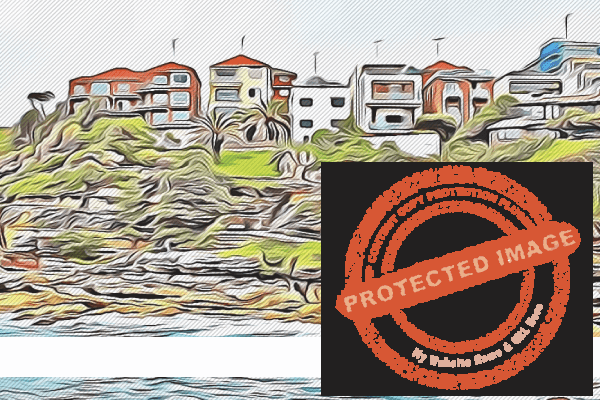
- QT Sydney (///ropes.occupy.tree) – located in the Darlinghurst suburb of Sydney. The hotel is within the former landmark State and Gowings building, next to the impressive State Theatre. The hotel offers 198 comfortable rooms, two restaurants and a bar/lounge. The hotel has free Wi-Fi, a health club and a full-service spa. QT Sydney is located close to all major landmarks; Circular Quay is only a 13-minute walk away. Darling Harbour is a 14-minute walk, and the Sydney Opera House is under 9 kilometres or 5.6 miles. The average standard room prices are around 160 US dollars, and there are many room options available. For more information regarding the hotel, please visit QT Sydney’s website (https://www.qthotels.com/sydney-cbd/)
- 57 Hotel (///desk.groups.pines) – located in the Surry Hills suburb of Sydney. The 57 Hotel is a contemporary boutique hotel offering 92 stylish and modern rooms. The hotel offers free Wi-Fi, an airport drop-off service, and coffee/tea are available in the common areas. The hotel is centrally located, with Circular Quay only a 30-minute walk and Hyde Park just a 16-minute walk away. The average standard room prices are around 80 US dollars, and there are many room options available. For more information regarding the hotel, please visit the 57 Hotel website (https://www.57hotel.com.au/)
- ibis budget Sydney East (///flip.expect.alarm) – located in the Darlinghurst suburb of Sydney. The hotel offers affordable accommodation that is centrally located. The 115-room economy hotel provides free Wi-Fi, a self-serve laundry facility, complimentary newspapers in the lobby and a luggage storage facility. The hotel is a 14-minute walk to the Royal Botanic Gardens, a 23-minute walk to Circular Quay and a 10-minute walk to Hyde Park. The average standard room prices are around 56 US dollars, and there are many room options available. For more information regarding the hotel, please visit the All-Accor website (https://all.accor.com/hotel/5675/index.en.shtml)

- Sydney Harbour Bridge (///mercy.home.meal) is an Australian heritage-listed steel bridge that connects Sydney’s central business district (CBD) and the Northern Shore. The bridge is an iconic landmark with its arch design which coined the nickname, the coat hanger. The Sydney Harbour Bridge is 504 meters or 1,654 feet in height and has a summit that is 134 meters or 440 feet above sea level. The bridge’s height and length make it the widest long-span bridge and tallest steel arch bridge in the world. The bridge is located close to the Sydney Opera House and offers impressive views across the city. A popular activity is to climb the steel arches to take in the breathtaking views. Many tours are available, taking anything from two hours to the ultimate, which takes over three and a half hours. To learn more about the bridge climbs, visit their website (https://www.bridgeclimb.com/climbs-prices) for more information
- Sydney Opera House (///tiny.loses.tree) is probably the most iconic and distinctive of all of the landmarks in Sydney. The opera house, which took 14 years to construct and was completed in 1973, was awarded UNESCO World Heritage status in 2007. The impressive building has a seating capacity for 5,738 people and hosts over 1,800 performances and 10 million visitors each year. The venue has played host to countless well-known singers, a catholic pope and Nelson Mandela shortly after release from prison. Whether you want to take in a performance, take a guided tour, or eat and drink in the available onsite food options, the Sydney Opera House is a must-see landmark. Click here to learn more about the guided tours and facilities available at the Opera House (https://www.sydneyoperahouse.com/visit-us/tours-and-experiences/guided-tours.html)
- Manly Beach (///duty.tube.mimic) is located 10 miles northeast of the inner city centre. It is one of the most famous surfing beaches in Sydney. The beach has hosted world surfing championships, and its long sandy beaches make it a popular destination for sun-seekers. Around Manly beach are hundreds of stores and boutiques to suit all shopping needs and tastes. Close to the tree-lined beaches are the many eateries, from cafes to restaurants, the majority specialising in seafood. Walking along the beach with ice cream or a drink from one of the many bars and coffee bars, all of your food and drink needs will be satisfied. Whether you want to go fishing or are looking to soak up the sun, Manly Beach is a great day out
- Royal Botanic Garden (///belong.chairs.locked) is an Australian heritage site located in an area of Sydney known as the domain. The garden was established in 1816 and is set on 74 acres or 30 hectares, and is home to over 9,000 species of plants. Whether you want to explore the gardens on your own or as part of a guided tour, you can learn all about the aboriginal culture, flora, and fauna found within Australia. The Calyx is home to a cafe, shops and offers a range of events and workshops; it also has one of the largest green walls in the Southern hemisphere. Walking through the gardens helps you to experience the beautiful range of plants and flowers on display. Within the northern section of the gardens provides the opportunity to take in some fantastic views of the iconic landmarks within Sydney with the stunning garden and plants as a backdrop. The Royal Botanic Garden typically opens from 7 am to 6 pm seven days a week. Opening times will vary throughout the year. To learn more about the gardens, visit the official Royal Botanic Garden website (https://www.rbgsyd.nsw.gov.au/)
- Luna Park (///poker.chefs.admire) is located in the Harbourside suburb on the northern shores of Sydney. Luna Park is an Australian heritage-listed amusement park that has entertained Sydney residents and visitors for over 80 years. The Park is only 2 kilometres or 1.2 miles from the city centre. You can get there by bus (to Milsons Point), train via the T1 or T9 lines (to Milsons Point Station), or ferry from Circular Quay to Milsons Point Wharf. The amusement park has four roller coasters, five thrill rides, nine family rides, seven attractions and seven games. The typical cost of a day pass ranges from 34 to 60 Australian dollars, and Flexi passes cost 70 Australian dollars or more. For more information about the attractions, rides and passes, visit the Luna Park website (https://www.lunaparksydney.com/)
Sydney is one of the most gay-friendliest cities in the world. For a long time, the city became a haven for the LGBTQIA+ community living in Australia. Many members were typically moving from rural communities or more conservative areas. Acceptance and inclusion have significantly improved over the last fifty years. It is now commonplace to see openly gay individuals and couples throughout the city. The annual Sydney Gay and Lesbian Mardi Gras is held every second Thursday in February and is a significant event in the city. The Mardi Gras is one of the largest globally, with over half a million people attending each year. In the eastern part of the city, the Darlinghurst suburb has trendy cafes, bars, and restaurants. It is also home to Oxford Street (///speaks.bottom.enable), one of the best-known areas for the city’s gay scene. The street becomes the central backdrop of the main Mardi gras each year. Throughout the year visitors can enjoy the many bars, nightclubs and restaurants. Gay nightclubs and bars can be found in many of Sydney’s suburbs. Newtown is a popular destination for gay nightlife and is considered the lesbian capital of the city.
For most European and American travellers, visiting Sydney will involve a travel time of approximately 22 hours and at least one stopover. Though for most travellers, the idea of spending a day travelling may not seem that appealing. Once you arrive and take in the natural beauty and energy around the city, the journey quickly becomes forgotten. Typically, many visitors to Sydney will incorporate it into a broader itinerary when visiting multiple destinations across Australia. Though Australia has a lot to offer, you must allow enough time to take in all of the sites to enjoy Sydney truly. Spending at least four days within the city will give you the opportunity to explore all that Sydney has to offer. Careful planning and pre-booking popular activities will mean you are not left disappointed once you arrive.
Sydney’s growing diversity is ever-present throughout the city, with many Asian, European and middle-eastern restaurants and bars available throughout the city. The city has a café culture, and many Sydneysiders love their coffee. The city has a lot of green spaces, and there are many parks and trees throughout Sydney. Though a modern city, wildlife can be seen everywhere, from colourful birds to cute little possums, squirrel gliders and wallabies. The beach is never far away and with the many transport options on land and by water, getting around is easy. Sydneysiders are friendly, and the city has a welcoming and energy that makes you want to spend time in the city. For many, an atmosphere and energy mean that once they have visited Sydney, they want to keep coming back.
In the words of one of Sydney’s famous residents, Russell Crowe, who once said, “The best things about Sydney are free: the sunshine’s free, the harbour’s free, and the beach is free”.

